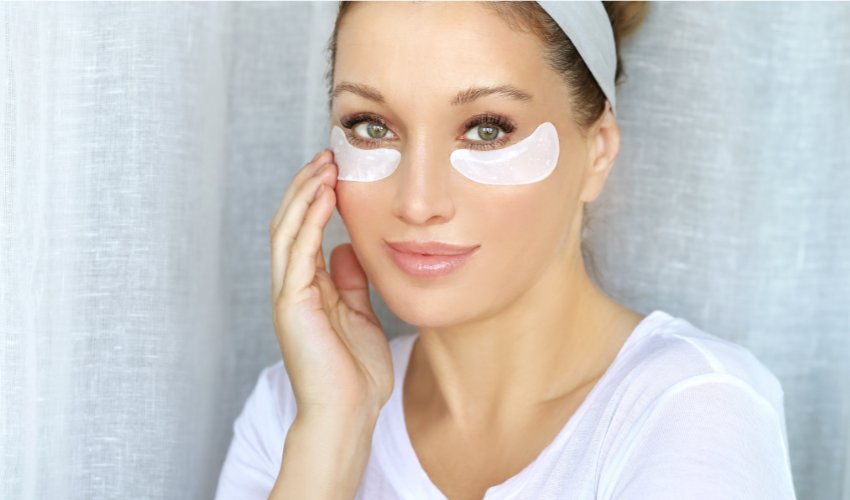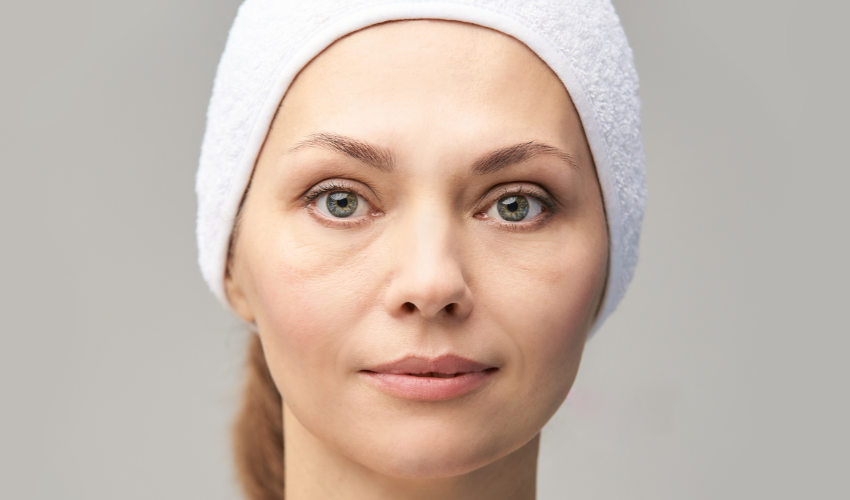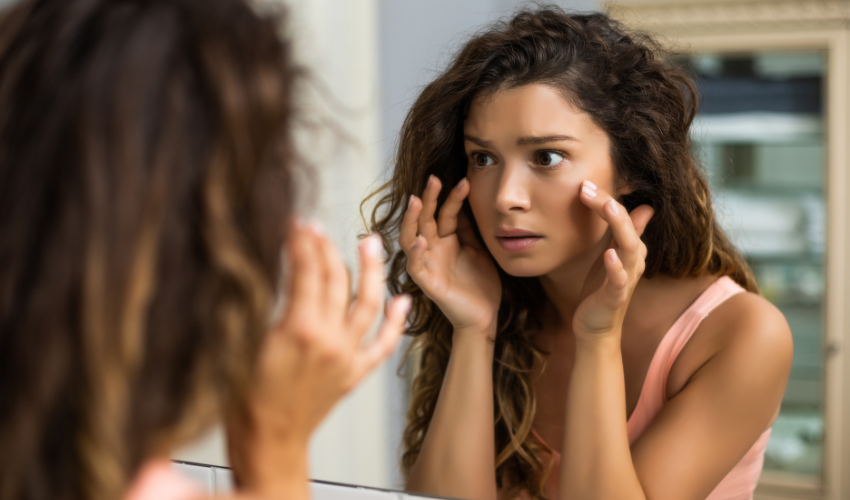Bags under the eyes are a common cosmetic concern that can make a person look tired and older. These bags can be caused by a variety of factors, including aging, genetics, sleep deprivation, stress, and even dietary deficiencies. In some cases, they may be due to fluid accumulation or swelling caused by factors like dehydration or allergies. Fortunately, there are steps you can take to reduce the appearance of bags under your eyes and promote healthy skin.
In this article, we will discuss the various causes, including deficiencies in certain nutrients. We will also provide tips for reducing the appearance of bags, including getting enough sleep, reducing salt intake, and drinking plenty of water. Additionally, we will suggest ways to improve skin health, such as using a good eye cream and massaging the area under the eyes. Finally, we will explore medical treatments that may be recommended for severe cases of bags under the eyes.
Why Do Bags Appear Under the Eyes?
Bags under the eyes are a common cosmetic concern that can make a person look tired or older than they actually are. The appearance of bags under the eyes can be caused by several factors, including aging, genetics, lack of sleep, stress, allergies, fluid retention, and lifestyle factors.
As we age, the skin around our eyes becomes thinner, making it easier for fat to bulge out and create the appearance of bags. Additionally, the muscles supporting the eyelids can weaken over time, leading to a drooping appearance and further accentuating the bags.
Genetics can also play a role. If you have a family history of bags, you may be more likely to develop them yourself.
Lack of sleep, stress, and a high-salt diet can cause fluid to build up under the eyes, leading to puffiness and the appearance of bags. Allergies can also lead to swelling and inflammation around the eyes, which can make the bags appear more pronounced.
Lifestyle factors such as smoking and alcohol consumption can also contribute to the appearance of bags under the eyes. Smoking can cause the blood vessels under the skin to narrow, reducing the circulation and making the skin look dull and puffy. Alcohol can cause dehydration, leading to fluid retention and making the bags look more noticeable.
To minimize the appearance of bags under the eyes, it is important to get enough sleep, manage stress, eat a healthy diet low in salt, and avoid smoking and excessive alcohol consumption. Drinking plenty of water can also help to reduce fluid retention and improve the overall appearance of the skin. In severe cases, cosmetic treatments such as injectable fillers or surgery may be recommended to remove the bags.

How to Get Rid of Bags Under Your Eyes
Here are some tips:
- Get enough sleep: Aim for 7-9 hours of sleep each night to reduce dark circles and puffiness.
- Manage stress: Practice stress-management techniques such as meditation, exercise, and deep breathing to help reduce puffiness.
- Reduce salt intake: Eating a diet low in salt can help reduce fluid retention and reduce puffiness under the eyes.
- Drink plenty of water: Staying hydrated can help flush out toxins and reduce puffiness.
- Apply cold compresses: Placing a cold compress, such as a cold cucumber slice or a bag of frozen peas, on your closed eyes can help reduce swelling.
- Massage: Gently massaging the area under your eyes can help increase blood flow and reduce puffiness.
- Use a good eye cream: Look for an eye cream that contains ingredients like caffeine, vitamin C, and hyaluronic acid to help reduce puffiness and brighten dark circles.
- Avoid alcohol and caffeine: Alcohol and caffeine can dehydrate the skin, making puffiness under the eyes worse.
- Sleep on your back: Sleeping on your back with an extra pillow can help reduce fluid buildup and puffiness under the eyes.
- Consider medical treatments: In severe cases, cosmetic treatments such as injectable fillers or surgery may be recommended to remove the bags.
It’s important to note that some people may have more persistent bags under their eyes due to genetics or other medical conditions. In these cases, seeking advice from a dermatologist or other medical professional is recommended.
What is the main cause of eye bags?
The main cause of eye bags is aging. As you grow older, the skin around your eyes naturally becomes thinner and loses elasticity, causing fat to accumulate and form bags. Additionally, the muscles supporting the eyelids can weaken, leading to sagging skin and further contributing to the appearance of bags.
Other factors that can contribute to the appearance of bags under the eyes include genetics, sleep deprivation, stress, fluid accumulation due to allergies or dehydration, and diet.

What deficiency causes bags under your eyes?
A deficiency in certain nutrients can contribute to the appearance of bags under the eyes. Some common deficiencies include:
- Iron: Anemia, a condition caused by low iron levels, can cause dark circles under the eyes.
- Vitamin B12: A deficiency in vitamin B12 can lead to fatigue and paleness, which can accentuate dark circles.
- Vitamin K: A deficiency in vitamin K can contribute to poor blood circulation, which can lead to dark circles under the eyes.
- Fatty acids: A diet lacking in fatty acids can lead to dry and thin skin, making dark circles more noticeable.
- Hydration: Dehydration can cause the skin to appear dull and can make dark circles more noticeable.
It’s important to remember that bags under the eyes can be caused by multiple factors and a deficiency in a specific nutrient may not be the sole cause. Maintaining a balanced diet and staying hydrated can help reduce the appearance of bags under the eyes and promote overall skin health. If you’re concerned about a specific nutrient deficiency, it’s best to consult a healthcare professional for proper testing and advice.
Can dehydration cause bags under eyes?
Yes. When the body is dehydrated, the skin around the eyes can become dry and appear sunken, creating the appearance of bags. Additionally, dehydration can cause fluid to accumulate in the face, leading to puffiness and swelling around the eyes. Drinking plenty of water and staying hydrated can help reduce the appearance of bags under the eyes and improve overall skin health.
Conclusion
In conclusion, bags under the eyes can be a common cosmetic concern for many people. While there is no one-size-fits-all solution for reducing the appearance of bags, there are steps you can take to promote healthy skin and reduce puffiness and swelling. These steps include getting enough sleep, reducing salt intake, drinking plenty of water, using a good eye cream, and massaging the area under the eyes. In severe cases, cosmetic treatments such as injectable fillers or surgery may be recommended.
It’s important to remember that while bags under the eyes can be a cosmetic concern, they are not always a sign of a serious underlying issue. In most cases, they are simply a result of natural aging or lifestyle factors. However, if you’re concerned about the appearance of bags under your eyes, it’s always best to consult with a healthcare professional for a proper evaluation and advice.
With the right steps and a focus on healthy skin care, you can reduce the appearance of bags under your eyes and maintain a youthful, refreshed appearance.
